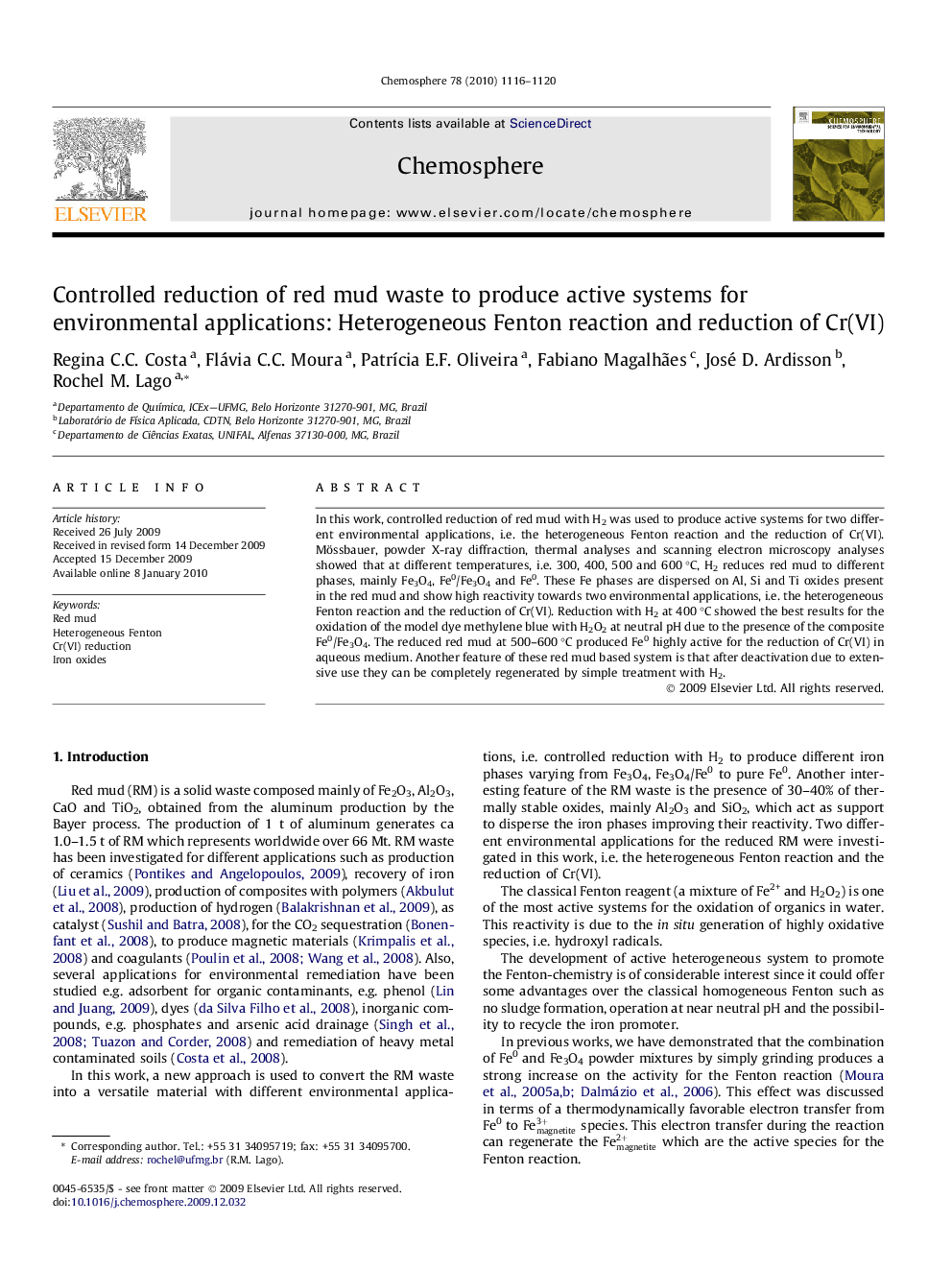| Article ID | Journal | Published Year | Pages | File Type |
|---|---|---|---|---|
| 4411844 | Chemosphere | 2010 | 5 Pages |
In this work, controlled reduction of red mud with H2 was used to produce active systems for two different environmental applications, i.e. the heterogeneous Fenton reaction and the reduction of Cr(VI). Mössbauer, powder X-ray diffraction, thermal analyses and scanning electron microscopy analyses showed that at different temperatures, i.e. 300, 400, 500 and 600 °C, H2 reduces red mud to different phases, mainly Fe3O4, Fe0/Fe3O4 and Fe0. These Fe phases are dispersed on Al, Si and Ti oxides present in the red mud and show high reactivity towards two environmental applications, i.e. the heterogeneous Fenton reaction and the reduction of Cr(VI). Reduction with H2 at 400 °C showed the best results for the oxidation of the model dye methylene blue with H2O2 at neutral pH due to the presence of the composite Fe0/Fe3O4. The reduced red mud at 500–600 °C produced Fe0 highly active for the reduction of Cr(VI) in aqueous medium. Another feature of these red mud based system is that after deactivation due to extensive use they can be completely regenerated by simple treatment with H2.
